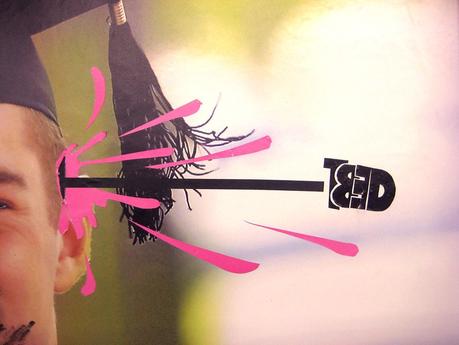
On the island of the United States, we are debating whether it is unfair and unfair to forgive certain college loans. We are oblivious to the rest of the planet, where college education in developed countries is of course free.
We are also oblivious to our own historical role in educating the masses, despite powerful opposition. In 1857, President James Buchanan vetoed the bill that would have created federally subsidized universities, saying it violated state rights and set a dangerous precedent for federal aid for education. . But in 1862, a similar bill, the Morrill Act, passed thanks to the wartime absence of members of Congress from the slave states; this created the land-grant colleges for young working-class men - and, later, women. The United States was also a world leader in guaranteeing a free twelve-year education for all children. Although Southern states sabotaged national law with their bogus "separate but equal" schools for black children, the post-WWII civil rights movement in 1954 (in Brown vs. Board of Education of Topeka) made this public education free for twelve years. at least the law of the land.
The 1960s and early 1970s seemed to promise greater progress. But the Empire fought back.
At the time, the City University of New York (CUNY) was the third largest public higher education system in the nation, behind the University of California and the State University of New York. Not since the founding of its first college in 1847 had CUNY charged tuition. For more than a century, it had therefore been a avenue to success for tens of thousands of poor and working-class New Yorkers.
In April 1969, students sat down at City College at CUNY denouncing what they saw as the university's discrimination against people of color and the poor in admissions policy. In response, the Board of Higher Education launched an open admissions program whereby every New York high school graduate could enroll in the city's famous university. Now combining open admissions with free tuition, CUNY has emerged as the vanguard of the democratization of American higher education.
At this point, a fierce counter-offensive against progressive movements on campus is launched and coordinated by the White House, occupied since February by Richard Nixon. In June, President Nixon gave a speech at General Beadle State College in South Dakota in which he equated "drugs, crime, campus riots, racial discord, [and] draft resistance," expressed horror at the "patterns of deception" in American life stemming from disregard for moral, legal, and intellectual standards, and denounced the campus movement as being at the heart of this national crisis:
We have long regarded our colleges and universities as citadels of freedom, where reason reigns. Now the process of freedom and the rule of reason are under attack. At the same time, our colleges are under pressure to collapse their teaching standards, in the mistaken belief that this will promote "opportunity".
Vice President Agnew (not yet indicted for his own criminal activities) was even more explicit. Speaking at a Republican fundraising dinner in Iowa in April 1970, Agnew argued that there was too high a percentage of black students in college and condemned "violence emanating from the black student activism. Stating that "university, once considered a privilege, is now considered a right", he singled out open admissions as one of the main means "by which unqualified students are drawn into university by the wave of new socialism. "
Later in 1970, Roger Freeman-a key educational adviser to Nixon who was then working for the re-election of California Governor Ronald Reagan-explained quite precisely what the conservative counterattack was intended to prevent:
We risk producing an educated proletariat. It's dynamite ! We must be selective about who we allow to pursue higher education. Otherwise, we will have a large number of highly qualified and unemployed people.
The two most threatening institutional sources of the danger described by Freeman were obviously these two large public tuition-free university systems: the University of California and the City University of New York. Governor Reagan was able to eliminate free tuition at the University of California in 1970, but that left CUNY threatening American society. The vital task of crippling CUNY was to last another six years, outlive the Nixon administration and fall to his designated successor, Gerald Ford.
Speaking to the National Press Club in late 1975, President Ford explicitly stated that he would withhold federal aid from New York City, then in the throes of a severe financial crisis, until it eliminates the indulgent luxury of open admissions and free college tuition. City University. To be fiscally responsible, the president said, New York must no longer be a city that "runs one of the greatest universities in the world, with no tuition for any high school graduate, rich or poor, who wants to attend." . Ford press secretary Ron Nessen, speaking in highly coded language, explained the president's determination to block federal aid to New York City, which he compared to "a wayward girl heroin addict": "You don't give him $100 a day to support his habit. You make him make cold turkey to break his habit.
Finally, in 1976, the Assault on Public Education succeeded in ending City University's 129-year policy of not charging tuition fees, wiping out the last bastion of free public higher education in the United States. United States. Simultaneously, the university laid off hundreds of junior faculty hired to implement the open admissions program.
In the decades since, with free tuition resembling a relic of an ancient past or a dream of a utopian future, tuition and other fees have steadily risen in colleges and public universities in the country. Combined with shrinking scholarship budgets, these rising costs made it increasingly difficult for poor and working-class students to access higher education, a trend accelerated in the late 1990s by open attacks. against affirmative action. Then, in 1998 and 1999, CUNY and New York's poor became targets again, as the administrations of Mayor Rudolph Giuliani and Governor George Pataki moved to ban remedial education at one of the four colleges. years of the city.
Meanwhile, as state and federal governments withdrew funds that could open universities, they began to spend huge sums to build alternative institutions for the poor - with exceptionally easy entry requirements and long registrations for people of color. From 1976, when free higher education was eradicated, until the end of the century, on average one new prison was built in America every week. The prison population grew from less than 200,000 in 1971 to almost two million in 1999, with America becoming the prison capital of the world. The state of California alone now ran the second largest prison system in the world. By the late 1990s, many states had followed California's lead in spending more money on prisons than on higher education. Across the country, many more young black men were in prison than in college.
By then, felony convictions had disenfranchised 4.1 million American citizens. It's been a vengeful culture war - and a very effective strategy.
And let's not forget another objective of the strategy. The late 1960s and early 1970s taught the ruling class that using a conscript to fight the wars of an empire was playing with fire. During my four decades teaching at the Newark campus of Rutgers, the State University of New Jersey, many of my students avoided loans by enrolling in the military. Many were sent to Iraq and Afghanistan.
Are we ever going to go back to talking about free higher education?
Adapted from Vietnam and other American fantasies.

